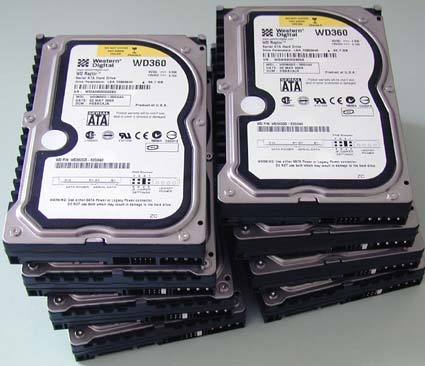RAID 5 Scaling Tests With Up To Eight Drives
RAID 5 Scaling Tests Using Three To Eight Drives
Disk drive technologies continue to get better and cheaper. Before long, PCI Express, DDR2 memory, Serial ATA with Command Queuing and 400 GB hard drives will become common fare. Nevertheless, the hard drive still remains the Achilles heel of any computer since, as an electromechanical component, the risk of it developing a defect is relatively high. On top of that, it's one of the most sluggish elements inside the PC.
But in addition to these negative factors, a faulty hard drive has the potential to do the most damage compared to other components. While a defective memory module or overheated graphics card can very easily be replaced, in the worst-case scenario a hard drive can take along valuable data to the great beyond - data that can only be resurrected with the help of expensive data salvage experts like CBL and Ontrack.
Nowadays, anyone who depends on data being there can't get around regular data backup. The problem, however, doesn't only concern the recoverability of bits and Bytes, but also the time loss engendered by any kind of hardware defect - especially when you're dealing with server systems.
That leaves deploying a drive array as the only tried-and-tested solution approach to compensate for a defect in an individual hard drive. In the simplest case RAID 1 is the solution, which uses two hard drives at once. If one of them crashes, the second is still available. Very often, however, higher performance and storage levels are required, making it necessary to resort to a RAID 5.
Get Tom's Hardware's best news and in-depth reviews, straight to your inbox.
Current page: RAID 5 Scaling Tests Using Three To Eight Drives
Next Page All-around Solution: RAID 5
Patrick Schmid was the editor-in-chief for Tom's Hardware from 2005 to 2006. He wrote numerous articles on a wide range of hardware topics, including storage, CPUs, and system builds.
